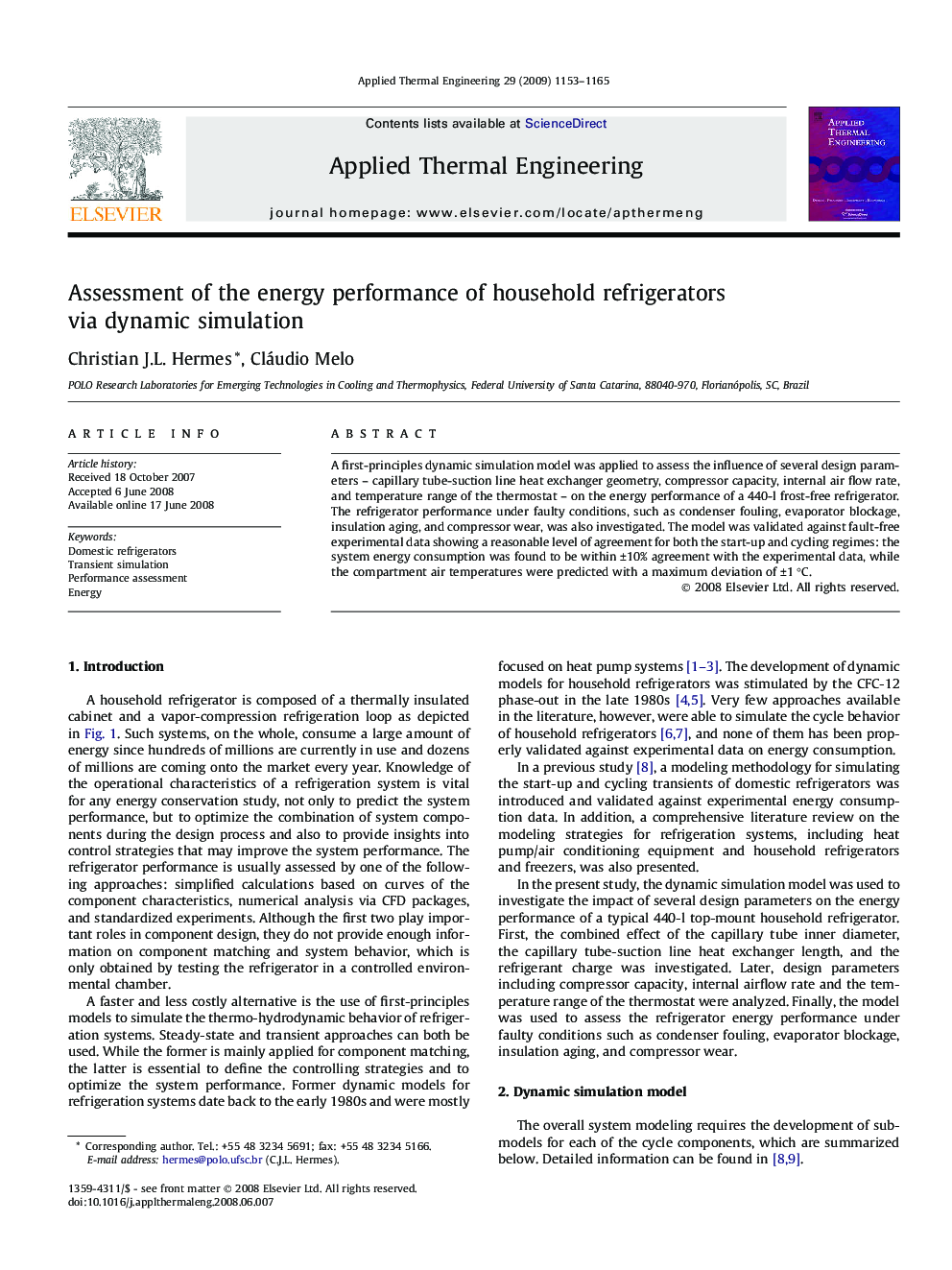| Article ID | Journal | Published Year | Pages | File Type |
|---|---|---|---|---|
| 648964 | Applied Thermal Engineering | 2009 | 13 Pages |
A first-principles dynamic simulation model was applied to assess the influence of several design parameters – capillary tube-suction line heat exchanger geometry, compressor capacity, internal air flow rate, and temperature range of the thermostat – on the energy performance of a 440-l frost-free refrigerator. The refrigerator performance under faulty conditions, such as condenser fouling, evaporator blockage, insulation aging, and compressor wear, was also investigated. The model was validated against fault-free experimental data showing a reasonable level of agreement for both the start-up and cycling regimes: the system energy consumption was found to be within ±10% agreement with the experimental data, while the compartment air temperatures were predicted with a maximum deviation of ±1 °C.
